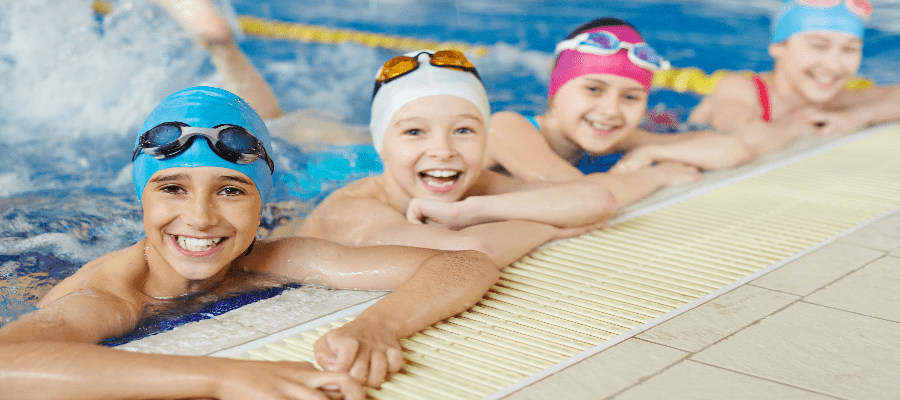
Swimming lessons are essential when it comes to developing life skills, which help to keep all children safe in, on and around water. In order to get the best results from your swimming lessons and increase engagement among students it’s important to keep lessons moving as much as possible. This can be achieved with all age groups and skill levels by utilising a range of different techniques such as wave swimming, chain swimming and group tasks.
Wave Swimming
This involves splitting the students into two groups through numbers or fun names such as mermaids & sharks etc. You should then call one group at a time. This eliminates the long wait times that are evident in one on one swimming and allows you to review a smaller group of student’s technique and skill level at once, therefore making corrections as needed.
Chain Swimming
This technique involves setting out a point in your lane that the swimmer has to get to before the next swimmer can start. You should set out the lane so they will be swimming up and back to allow the chain to work efficiently and without chaos. This will help you to have one-on-one time with students, but keep them all swimming. You should stand at the deepest point of the lane allowing you to correct them as they swim up and back past you.
Group Swimming
This can be used when you have a skill all students should be able to perform quite easily, without too much assistance from you. An example of this is kicking on their front and back (with aids for younger stages).
Keeping the students moving not only keeps the parents happy, but also helps students to practice the necessary skills to pass their stages and learn vital aquatic survival skills whilst staying engaged.
Get more great ideas about how to keep your lessons interesting and engaging by checking out our range of books and manuals!
